Placentation defects are highly prevalent in embryonic lethal mouse mutants
- PMID: 29539633
- PMCID: PMC5866719
- DOI: 10.1038/nature26002
Placentation defects are highly prevalent in embryonic lethal mouse mutants
Abstract
Large-scale phenotyping efforts have demonstrated that approximately 25-30% of mouse gene knockouts cause intrauterine lethality. Analysis of these mutants has largely focused on the embryo and not the placenta, despite the crucial role of this extraembryonic organ for developmental progression. Here we screened 103 embryonic lethal and sub-viable mouse knockout lines from the Deciphering the Mechanisms of Developmental Disorders program for placental phenotypes. We found that 68% of knockout lines that are lethal at or after mid-gestation exhibited placental dysmorphologies. Early lethality (embryonic days 9.5-14.5) is almost always associated with severe placental malformations. Placental defects correlate strongly with abnormal brain, heart and vascular development. Analysis of mutant trophoblast stem cells and conditional knockouts suggests that a considerable number of factors that cause embryonic lethality when ablated have primary gene function in trophoblast cells. Our data highlight the hugely under-appreciated importance of placental defects in contributing to abnormal embryo development and suggest key molecular nodes that govern placenta formation.
Conflict of interest statement
The authors declare no competing financial interests.
Figures
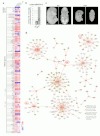

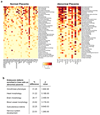



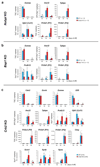




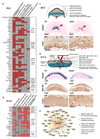

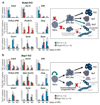

Similar articles
-
Heart defects and embryonic lethality in Asb2 knock out mice correlate with placental defects.Cells Dev. 2021 Mar;165:203663. doi: 10.1016/j.cdev.2021.203663. Epub 2021 Jan 27. Cells Dev. 2021. PMID: 33993984
-
Abnormal placental development and early embryonic lethality in EpCAM-null mice.PLoS One. 2009 Dec 31;4(12):e8543. doi: 10.1371/journal.pone.0008543. PLoS One. 2009. PMID: 20046825 Free PMC article.
-
Keratin 5-Cre-driven excision of nonmuscle myosin IIA in early embryo trophectoderm leads to placenta defects and embryonic lethality.Dev Biol. 2013 Oct 1;382(1):136-48. doi: 10.1016/j.ydbio.2013.07.017. Epub 2013 Jul 30. Dev Biol. 2013. PMID: 23911870 Free PMC article.
-
Placental formation in early pregnancy: how is the centre of the placenta made?Hum Reprod Update. 2018 Nov 1;24(6):750-760. doi: 10.1093/humupd/dmy030. Hum Reprod Update. 2018. PMID: 30257012 Review.
-
Progress in deciphering trophoblast cell differentiation during human placentation.Curr Opin Cell Biol. 2020 Dec;67:86-91. doi: 10.1016/j.ceb.2020.08.010. Epub 2020 Sep 18. Curr Opin Cell Biol. 2020. PMID: 32957014 Review.
Cited by
-
Ankmy2 Prevents Smoothened-Independent Hyperactivation of the Hedgehog Pathway via Cilia-Regulated Adenylyl Cyclase Signaling.Dev Cell. 2020 Sep 28;54(6):710-726.e8. doi: 10.1016/j.devcel.2020.06.034. Epub 2020 Jul 22. Dev Cell. 2020. PMID: 32702291 Free PMC article.
-
Placental Findings in Pregnancies Complicated by Maternal Cardiovascular Disease.JACC Adv. 2022 Mar 16;1(1):100008. doi: 10.1016/j.jacadv.2022.100008. eCollection 2022 Mar. JACC Adv. 2022. PMID: 38939083 Free PMC article.
-
Super-enhancer-guided mapping of regulatory networks controlling mouse trophoblast stem cells.Nat Commun. 2019 Oct 18;10(1):4749. doi: 10.1038/s41467-019-12720-6. Nat Commun. 2019. PMID: 31628347 Free PMC article.
-
Recent Updates on Research Models and Tools to Study Virus-Host Interactions at the Placenta.Viruses. 2019 Dec 18;12(1):5. doi: 10.3390/v12010005. Viruses. 2019. PMID: 31861492 Free PMC article. Review.
-
Nhlrc2 is crucial during mouse gastrulation.Genesis. 2022 Mar;60(3):e23470. doi: 10.1002/dvg.23470. Epub 2022 Mar 8. Genesis. 2022. PMID: 35258166 Free PMC article.
References
Publication types
MeSH terms
Grants and funding
LinkOut - more resources
Full Text Sources
Other Literature Sources
Molecular Biology Databases
Research Materials

